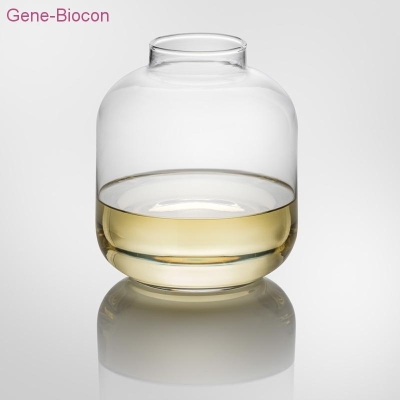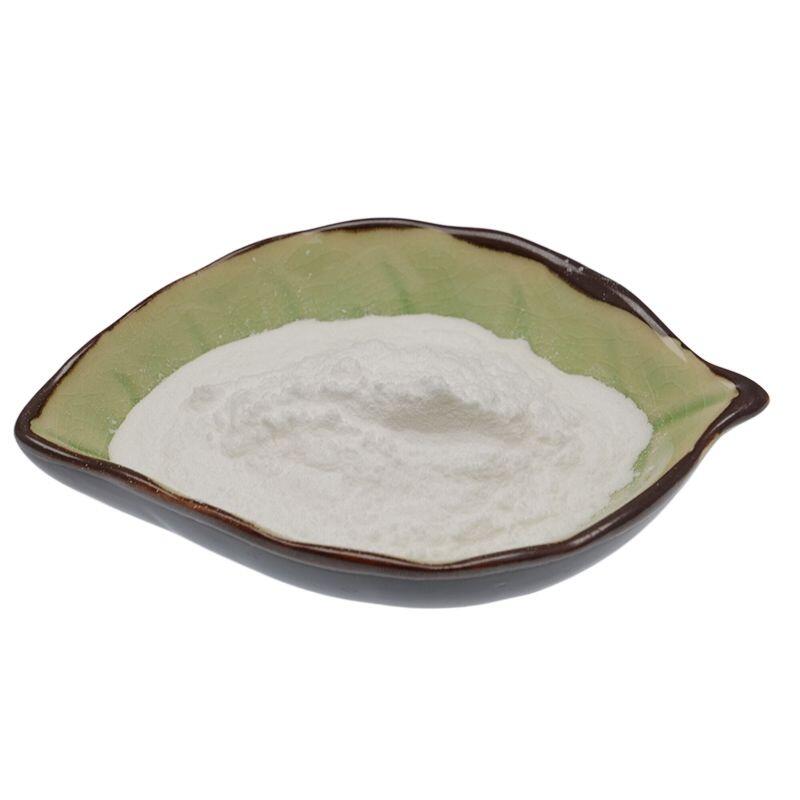This article is an interpretation of the latest major research results in the field of regenerative medicine!
-
Last Update: 2019-06-14
-
Source: Internet
-
Author: User
Search more information of high quality chemicals, good prices and reliable suppliers, visit
www.echemi.com
June 14, 2019 news / BIOON / -- this article brings you the latest research progress in the field of regenerative medicine and helps you understand the recent major research results in the field of regenerative medicine I hope you like it 【1】 PNAs: significant progress! In a new study, researchers from the Icahn School of medicine in Sinai mountain in the United States confirmed that in animal models, stem cells from the placenta called CDX2 cells can regenerate healthy heart cells after a heart attack These findings may represent a new therapy for regenerating the heart and other organs The results were published in PNAS Photo source: PNAs researchers have previously found that a mixed population of mouse placenta stem cells can help pregnant female mice recover from heart damage that could lead to heart failure They found that these placental stem cells migrated to the heart of pregnant female mice, and directly to the damaged part of the heart They then reprogram themselves to become beating heart cells, helping with the repair process The new study aims to determine which types of stem cells can regenerate heart cells The researchers first looked at CDX2 cells, the most common type of stem cells previously identified in this mixed stem cell population, and found that they account for the highest proportion (40%) of stem cells from the placenta that contribute to heart regeneration To test the regeneration properties of CDX2 cells, the researchers induced heart attacks in three groups of male mice The first group received CDX2 stem cells from the placenta of mice with terminal pregnancy, the second group received CDX2 free placenta cells, and the third group received saline as control They used magnetic resonance imaging to analyze all mice immediately after the induction of a heart attack, and to reanalyze the mice three months after they were treated with cells or saline after the induction of a heart attack They found that each mouse in the CDX2 stem cell treatment group had significant improvement and regeneration in heart healthy tissue By three months, these stem cells migrate directly to the damaged part of the heart and form new blood vessels and new cardiac cells (beating cardiac cells) Mice injected with normal saline and non-cdx2 placental cells developed heart failure, and there was no evidence of regeneration in their hearts The researchers noted two other features of CDX2 cells: they have all the proteins of embryonic stem cells, but also other proteins, which enable them to migrate directly to the injured site, which is something embryonic stem cells cannot do, and they seem to avoid host immune response When CDX2 cells from the placenta are injected into another animal, they are not rejected by the host immune system 【2】 SCI Rep: inhibition of protein phosphorylation promotes optic nerve regeneration after injury doi: 10.1038/s41598-019-43658-w a new study by Professor Toshio Ohshima of Waseda University found that inhibition of phosphorylation of crmp2, a microtubule binding protein, can inhibit the degradation of nerve fibers and promote the regeneration of optic nerve after injury The results of this study, recently published in the Journal of scientific reports, can be used to develop new treatments for patients with optic neuropathy In the past research, we have found the potential mechanism of inhibiting axon regeneration, and think that solving these mechanisms can make scientists further develop new treatment methods of central nervous system injury CRMP2 protein molecules play a role in stabilizing microtubules Microtubules provide structural support for the central nervous system at the level of neuron cells, and promote polymerization by combining with microtubule protein two polymers However, these functions are blocked by various kinases through phosphorylation, a mechanism that regulates neuronal proteins "In our previous study, what we did was to develop crmp2 knockin mice and genetically inhibit their crmp2 phosphorylation," explains Professor Ohshima "As a result, crmp2 knockin mice exhibited axonal regeneration after spinal cord injury Therefore, we assume that the same phenomenon can be observed after optic nerve injury "In this study, the scientists compared the degeneration and regeneration of optic nerve in wild-type and crmp2 overexpressed mice after optic nerve injury caused by optic nerve crush They found that the destabilization and depolymerization of microtubules after optic nerve crush injury were inhibited in crmp2 overexpression mice, and the damage of retinal ganglion cells was reduced In addition, four weeks after optic nerve compression, the protein level of gap43 (a molecular marker of axon regeneration) in the optic nerve of crmp2 overexpressed mice was higher than that of wild-type mice In addition, the number of axons in the optic nerve of crmp2 overexpressed mice increased 【3】 Science: we found a new cell type doi: 10.1126/science.aav9996, which is helpful for tadpole tail regeneration In a new study, researchers from Cambridge University and other research institutions in the UK found a special skin cell population to coordinate frog tail regeneration These regeneration organizing cells (ROC) help to explain a major mystery in nature and may provide clues on how to achieve this ability in mammalian tissues The results were published in the journal Science Using single cell genomics, the researchers developed a clever strategy to reveal what happens when different tadpole cells regenerate their tails Specifically, they analyzed the cell types involved in regeneration of tadpoles of Xenopus laevis "Tadpoles can regenerate their tails throughout their lives; but within two days of a precise stage of development, they lose this ability," Dr Hiscock said We use this natural phenomenon to compare the types of cells that can regenerate in tadpoles with those that can't "The researchers found that stem cell regeneration is coordinated by a subset of epidermal (skin) cells, which they call ROC cells "It's an amazing process that deserves further observation," aztekin said After tail amputation, ROC migrated from the body to the wound and secreted a series of growth factors to coordinate the response of tissue precursor cells Together, these cells then regenerate tails of the right size, pattern, and cell composition "In mammals, many tissues, such as the skin epidermis, intestinal epithelium and blood system, undergo constant turnover throughout their lives Cells lost as a result of failure or injury are supplemented by stem cells However, these specific cells are usually devoted to the production of cell subsets in tissues, and all organs and tissues have lost the ability to regenerate except for a few tissues such as liver and skin 【4】 Gene dev: "prince charming kissing" can promote brain regeneration? Doi: 10.1101/gad.323196.118 researchers studying brain chemistry of mice at Kyoto University revealed that the ebb and flow of gene expression may wake up the sleep of neural stem cells These findings may also apply to stem cells from other parts of the body, recently published in the journal genes & development Ryoichiro Kageyama, head of the Institute of frontier life and Medical Sciences at Kyoto University, said: "we have not directly compared the active stem cells in embryos with inactive" static "adult stem cells before They pointed out that there are at least two genes and their related proteins that have been identified for regulation activation The team focused on the protein 'Hes1', which is strongly expressed in adult cells This usually inhibits the production of other proteins such as' ascl1 ', a small number of which are periodically produced by active stem cells Monitoring the production of both proteins over time, the team identified a wave like pattern that causes stem cells to wake up and turn into neurons in the brain When they "knocked out" the genetic code needed to make Hes1, the cells began to produce more ascl1, which then activated almost all neural stem cells "It's important that the same genes are responsible for the activity and quiescence of these stem cells," Kageyama added "There is only a dynamic difference between the two A better understanding of the regulatory mechanisms of these different expression dynamics allows us to convert dormant cells into part of the treatment of a range of neurological diseases "[5] nature: gene therapy promotes cardiac regeneration doi: 10.1038/s41586-019-1191-6 researchers from King's College London found that one therapy can induce cardiac cell regeneration after a heart attack In the study, recently published in nature, the team implanted a small piece of genetic material called microrna-199 into the heart of pigs This gene can promote almost complete recovery of heart function in pigs one month after myocardial infarction Photo source: Professor Mauro giacca of King's College London, the lead author of Nature Research Report, said: "this is a very exciting time for this field After many failed attempts to regenerate the heart with stem cells, we saw real heart repair in large animals for the first time "This is the first time that it has been shown that heart regeneration can be achieved by using an effective genetic drug that can stimulate heart regeneration in large animals, just like human heart anatomy and physiology "It's going to take a while for us to conduct clinical trials," explained professor giacca "We still need to learn how to apply RNA as a synthetic molecule to large animals and then to patients, but we already know that it works well in mice "[6] genes & devel: scientists successfully" awaken "sleeping neural stem cells to unlock brain regeneration potential doi: 10.1101/gad.323196.118 recently, an international journal genes& In the Research Report on development, scientists from Kyoto University, Japan, found that the rise and fall of gene expression may make neural stem cells wake up from sleep by studying the brain chemical mechanism of mice The relevant research results are expected to help scientists understand the potential of large brain regeneration and develop new therapies for a variety of neurological diseases Researcher ryoichiro No scientists have been able to directly compare active stem cells in embryos with inactive dormant adult stem cells before, Kageyama said After in-depth study, researchers focused on a protein called Hes1, which is strongly expressed in adult cells Normally, it can inhibit the production of protein called ascl1, a small part of which is produced by active stem cells Produced periodically As time went on to monitor the production of these two proteins, researchers found a wave pattern that promotes stem cells to wake up and transform into neurons in the brain When the researchers knocked out the genetic code needed to make Hes1, they found that the cells began to make more ascl1 proteins, which then activated almost all neural stem cells The most important thing was that the same gene was responsible for the activity and resting state of these stem cells at the same time, and only the dynamics of expression was able
This article is an English version of an article which is originally in the Chinese language on echemi.com and is provided for information purposes only.
This website makes no representation or warranty of any kind, either expressed or implied, as to the accuracy, completeness ownership or reliability of
the article or any translations thereof. If you have any concerns or complaints relating to the article, please send an email, providing a detailed
description of the concern or complaint, to
service@echemi.com. A staff member will contact you within 5 working days. Once verified, infringing content
will be removed immediately.







